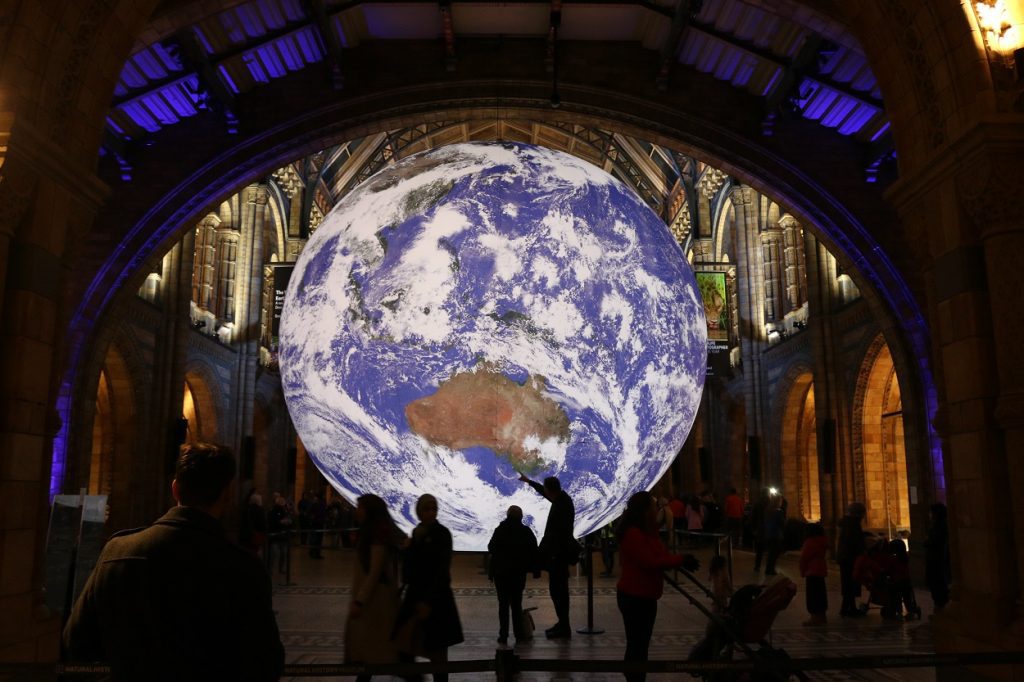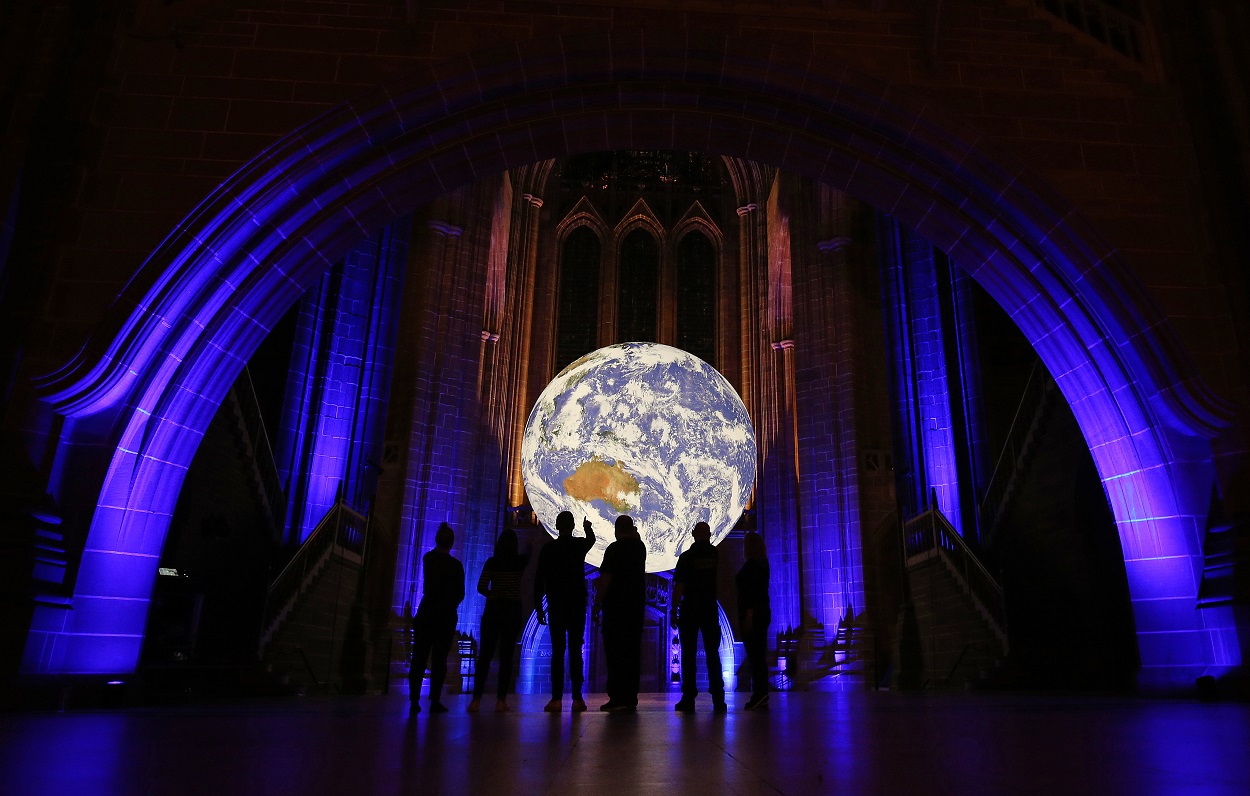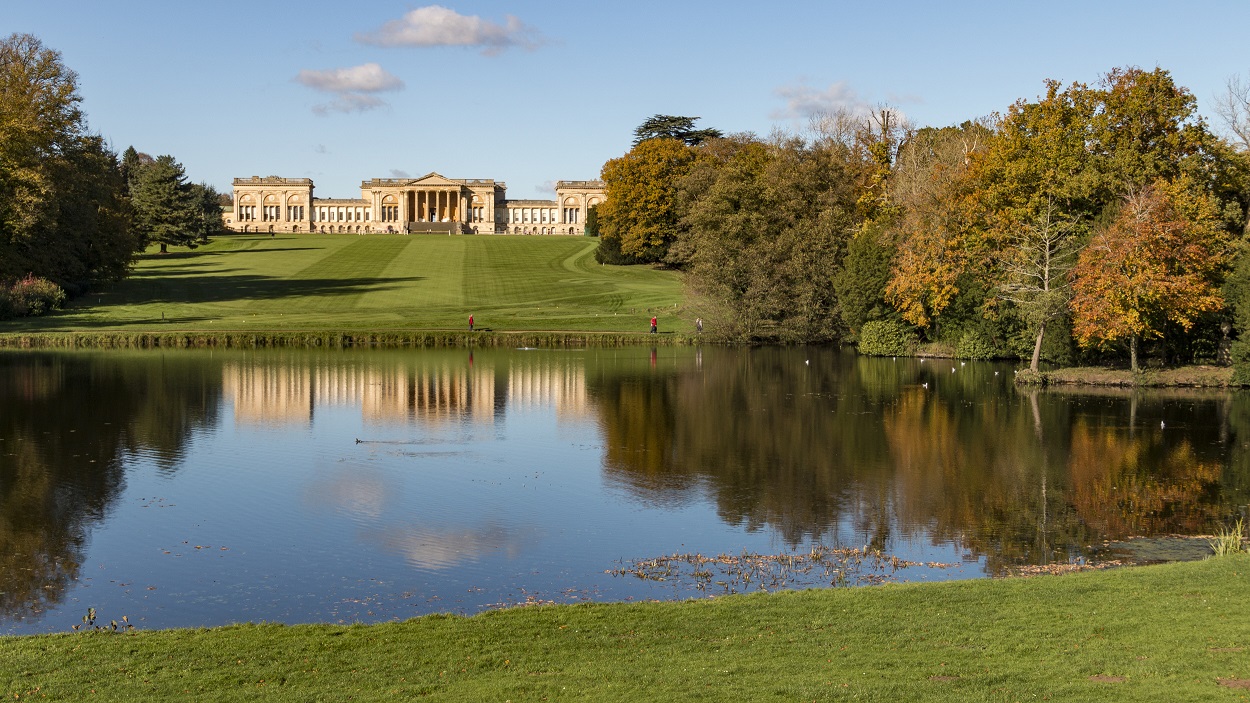Gaia art installation by Luke Jerram comes to Stowe House this October
Posted 11th October 2023
Step into the magnificent Marble Saloon of Stowe House and take in the spectacle of the universe. Designed to imitate the Pantheon of Rome, statues adorn the room, and light pours in from the majestic domed oculus to highlight a Roman triumphal procession carved into a frieze depicting 280 humans and 14 animals. It’s the perfect space to display the three-dimensional, six-metre floating sculpture of Gaia by internationally acclaimed artist, Luke Jerram.
Visitors will be able to enjoy timed entry to the eighteenth-century historic house, allowing plenty of space to explore this multi-sensory experience and soak up the atmosphere – even being encouraged to lay on the floor to encounter Earth’s surface as it would be viewed from space using detailed NASA imagery.
The installation creates a sense of the Overview Effect, which was first described by author Frank White in 1987. Common features of the experience for astronauts are a feeling of awe for the planet, a profound understanding of the interconnection of all life, and a renewed sense of responsibility for taking care of the environment.

Located in Britain’s largest cathedral,the artwork called ‘Gaia’, hangs majestically in the Grade I listed building and features accurate and detailed NASA imagery of the earth.
Images by Gareth Jones
The artwork also acts as a mirror to major events in society, the artwork may provide the viewer with a new perspective of our place on the planet; a sense that societies of the Earth are all interconnected and that we have a responsibility toward one another.
Working in partnership with Stowe School, students will be exploring the environment and the impact of climate change. Workshops and talks will be given inspired by having Gaia – and the opportunity to see our planet as never before.
Simon Wales, Chief Executive of Stowe House explains – “We are very pleased to host this thought-provoking artwork by Luke Jerram in the unique setting of the Marble Saloon at Stowe House. We hope that visitors of all ages will experience Gaia in our historic house, and we are offering extended opening hours to ensure that Gaia can be viewed during day and night conditions.”
Luke Jerram, said – “Gaia combines the architecture of the venue, the sculpture of the Earth and a surround sound composition. I’m excited for the artwork to be presented in the Marble Saloon as it will provide a unique setting whereby visitors can reflect on the majesty of our planet, its rich history and how we can protect its future.”
The event at Stowe House will take place between Sunday 15 and Thursday 26 October with timed arrival slots from 10am-8pm. Tickets: Adults (16+) £5; National Trust Members £4; Children £3; Under 2s go free. Tickets are available online at www.stowehouse.org and we recommend you book early to avoid disappointment.

Alongside the main exhibition will be a supporting programme for local school visits to provide access to the artwork in facilitated sessions.
The artwork is named after mother nature. In Greek mythology, Gaia is the personification of the earth and the ancestral mother of all life. This installation is the sister sculpture to Jerram’s previous work, Museum of the Moon, which has now been seen by over 3 million people in more than 25 countries.
For those who enjoy gazing into the galaxy, the house offers additional astronomical delights. In the Saloon stands the statue of Venus – The Romans once believed the planet to be the brightest star – and Urania goddess of astronomy who watched over the movement of the planets and stars. Meanwhile in the North Hall, amongst the dazzling gold decoration of the ceiling visitors can spot star signs and gods such as Mars, Saturn and Jupiter to name a few.
